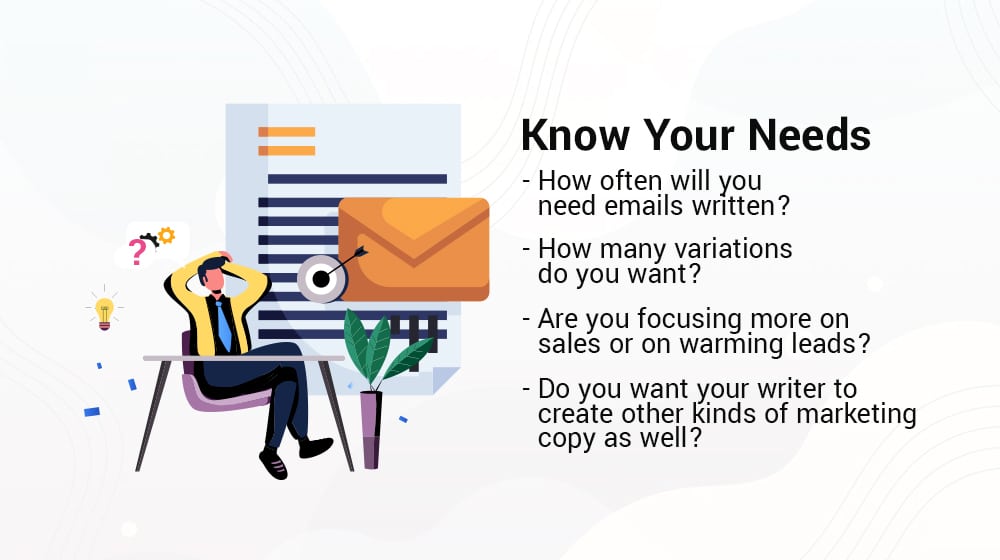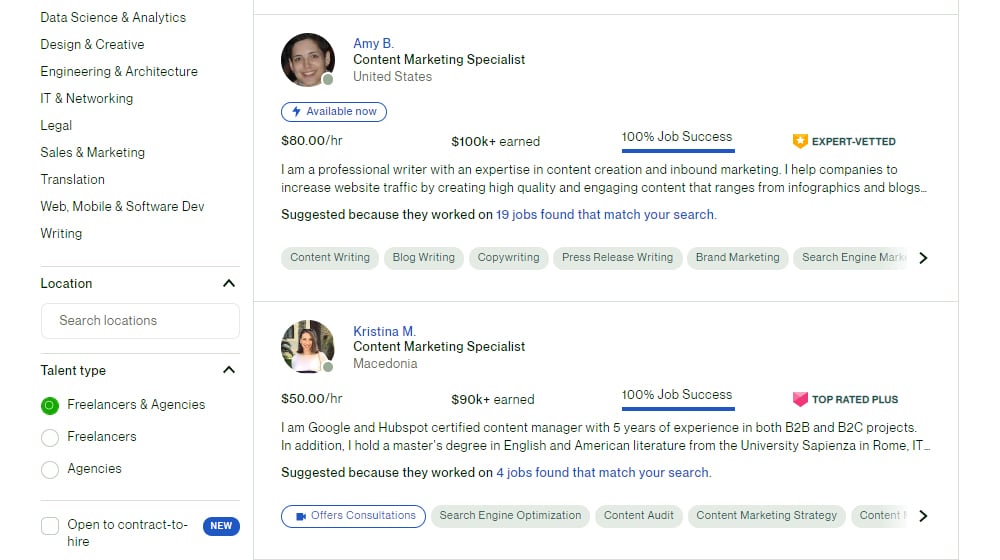Email marketing isn't as easy as it looks.
 Did you know that the average open rate for emails is only 21%? When all you have is a sender name and a few dozen characters of space for a subject line, and you have to use that to convince people to even open your email, you have a significant hurdle to overcome.
Did you know that the average open rate for emails is only 21%? When all you have is a sender name and a few dozen characters of space for a subject line, and you have to use that to convince people to even open your email, you have a significant hurdle to overcome.That's on top of the fact that any good newsletter will use a double opt-in system, meaning the people on your email list are already people interested in receiving your emails! Imagine how completely impossible it would be to reach anyone if you had to cold email them.
Once you overcome the initial hurdle of getting people to open your email, the email you've written needs to be extremely compelling.
Here's more bad news: the ideal length of a newsletter is no more than 20 lines of text, or about 200 words.
Can you craft a compelling email, with a value proposition and an effective call to action, in 200 words? It's hard, right? That's why it can be very beneficial to hire a professional to write your newsletters for you. The only question is, how can you do that?
As with most cases where you need to hire a writer, the first place to look isn't the job boards or the freelancer hubs; it's your internal setup. No, not because you can find a writer internally, though you might. It's actually because you need to know what you need before you can hire someone to do it for you. Here are some of the questions you'll want to answer before you start looking for writers.

Email frequency can vary a lot in marketing. Some companies send new emails every day, and a few can even get away with sending several each day. Others limit themselves to every few days or once a week. In rare instances, a brand might send only one email per month, or even less, though that's more often in the realm of individual entrepreneurs and people with sporadic, long-term projects (like authors who only send emails when they're launching new books.)
Now, writing emails isn't necessarily going to be time-consuming, at least not compared to other forms of content marketing. It does, however, require working closely with other parts of your marketing team. You probably won't need to hire more than one writer, but you will likely need your graphic designer to do work with them as well.
One key to successful email marketing is split testing and audience segmentation. Audience segmentation is the act of dividing your email list up based on shared qualities, such as what their primary interests are and why they subscribed to your brand. It doesn't make sense to send the same email to both people who signed up for your newsletter because they got a free eBook and people who signed up to enter a contest, right?
In some cases, email variations can be as simple as a rephrasing of your call to action. In other cases, you may want entirely separate emails for different segments of your audience. Know how many variations you want and how varied they will be, so you have an accurate idea of the workload you'll have for any writer you hire.
This isn't a specific question. Rather, it's indicative of the thought you put behind your emails. What is their purpose? Are you trying to build awareness for something, keep existing leads warm, warm up new leads, or promote a product? Do you want direct sales from your email, or are you using it as a near-top-of-funnel entry point?
Truthfully, you are probably doing all of this and more for different segments of your audience at different times. In addition to regular marketing emails, you're probably going to be creating drip campaigns, evergreen welcome emails, and all sorts of other email content. So, you'll need to decide what needs to be written and in what order.
Hiring a marketing writer for your newsletter alone is almost a waste of their talent. It might be worthwhile to have them work as part of your general marketing team. After all, it's a good idea to have a consistent voice between your different marketing materials, right? So, you might have this writer also produce landing pages, product page information, social media content, and other forms of sales content as well.
Unless you're a pretty small business, chances are you have more than one person creating content for your brand. Unless you're intentionally keeping different voices distinct (which is possible if you're running a multi-author blog), you will probably want a consistent brand voice and style across various forms of content and marketing.
What this means is that you'll want to create a brand style guide for your writers to follow.

This style guide should specify things such as:
A style guide can be pretty complex to put together, and it may take some trial and error to pin down what matters and what you don't actually care about. Don't be afraid to let the document evolve over time.
Unless your marketing department is a one-person show, you should keep them in the loop with your content creation process. They will be the ones working with your writer, since they're usually in charge of creating promotions and offers, and will help with your CTAs and the engagement process after a user opens and clicks through an email.

Depending on the scope of your organization, you may even give your marketing manager the deciding vote in which writer to hire once you've pinned down some options and given them tests.
What about the writers you want to hire? Well, writing marketing email newsletters is no easy task. Ideal candidates have experience with email marketing and your industry. Email is a particular format where things like SEO don't matter nearly as much as being persuasive and engaging with your audience. A good writer can write a newsletter, but a great writer can write one that resonates with your audience and converts.
Since you're very likely going with a freelancer for this, you'll want to look for writers who mention writing advertising copy (not just marketing copy) in their profiles or who specifically call out creating email campaigns.
Why go with freelancers? Well, if you're hiring an agency to write emails for you, you're either overpaying, or you're underutilizing their services. There aren't really any companies out there that just write email newsletters for you. They're more often going to be comprehensive marketing agencies. Don't get me wrong; that's fine to hire a marketing agency. It's just somewhat outside the scope of this article, so I'm not going to worry about it.

Where can you find writers? Well, the usual places. Try my job board, general remote work sites like FlexJobs, or writer hubs like Freelancer, Upwork, or Fiverr.
In this case, I would recommend against using a content mill like Textbroker or Writer Access for this kind of writing. You might have some luck in finding a good writer to handle your newsletters, but you might also run into problems with consistency, communication, and quality. You're generally going to be better off finding someone you can work with independently.
As with most cases where you want to hire a freelance writer, you should give your writer candidates a test project. This test project should be as close to a real email as possible, but with some information genericized, or overly-strict requirements, just to see what the writers can do.
As always, I strongly recommend that you pay for your test project. You want to make sure you hook the best writers, and the best writers aren't going to work without pay.

There's no real shortcut to testing writers for a role like this. You need to look for promising candidates, pitch them with your project, and see who bites. Among the ones who are interested, you'll want to interview them to see what their experience level is with your industry and their familiarity with your brand, if any. From there, pick the most promising writers and ask them to write an email, and evaluate what they give you.
Evaluating the emails your writer creates for you is both difficult and easier than you might expect. After all, you can ride at least somewhat on gut feelings and impressions; if you wouldn't open their subject line or wouldn't click their call to action, maybe they aren't the one for you. Of course, if you're naturally not the sort of person who opens marketing emails in the first place, that wouldn't be a good test. So, here are some things to look for.

The first thing you should check for is personalization in the email. Email personalization, especially in the subject line, is one of the best ways to draw in attention and get people to open and click through an email. Seeing their own name – or at least the name they gave you – is a good way to resonate with people. Your writer should produce something with either a specific name or a name field, like [Name], where the name would be filled in. Bonus points if they use the formatting your email system would likely use (and double bonus points if they ask what system you use ahead of time.)
Storytelling is a powerful technique to resonate an email with a reader. The trouble is, you don't have very much room to do it. Far too often, emails will have hundreds of words of lead-up, like a landing page was copied and pasted into the newsletter. That's not what you want; instead, you want a brief, compelling narrative that suffuses the email without being overt. It's tricky to pull off, but a good marketer should be able to do it.
Chances are you'll be providing the offer to the writer to work into the email, but you still want to verify that they use the call to action appropriately. If you wouldn't click the button, who would?
This one is entirely down to whether you ask for it or not, but I recommend asking for it. Split testing is the art of creating different versions of an email and sending them to different-yet-similar chunks of your audience to see which one works best and iterate on it. Check how they format these variations, too, in case you want to use software to generate them.
As mentioned at the top, the ideal word count for an email is usually around 200 words, though it depends on the specific use case of the email. Either way, check how long their email is and how effective it may be.
After all of this, you (and your marketing team) should have a good idea of which writer is the best one to pick up. With luck, you'll have a long and fruitful relationship with them. Good luck!
We encourage you to share this article on Twitter and Facebook. Just click those two links - you'll see why.
It's important to share the news to spread the truth. Most people won't.